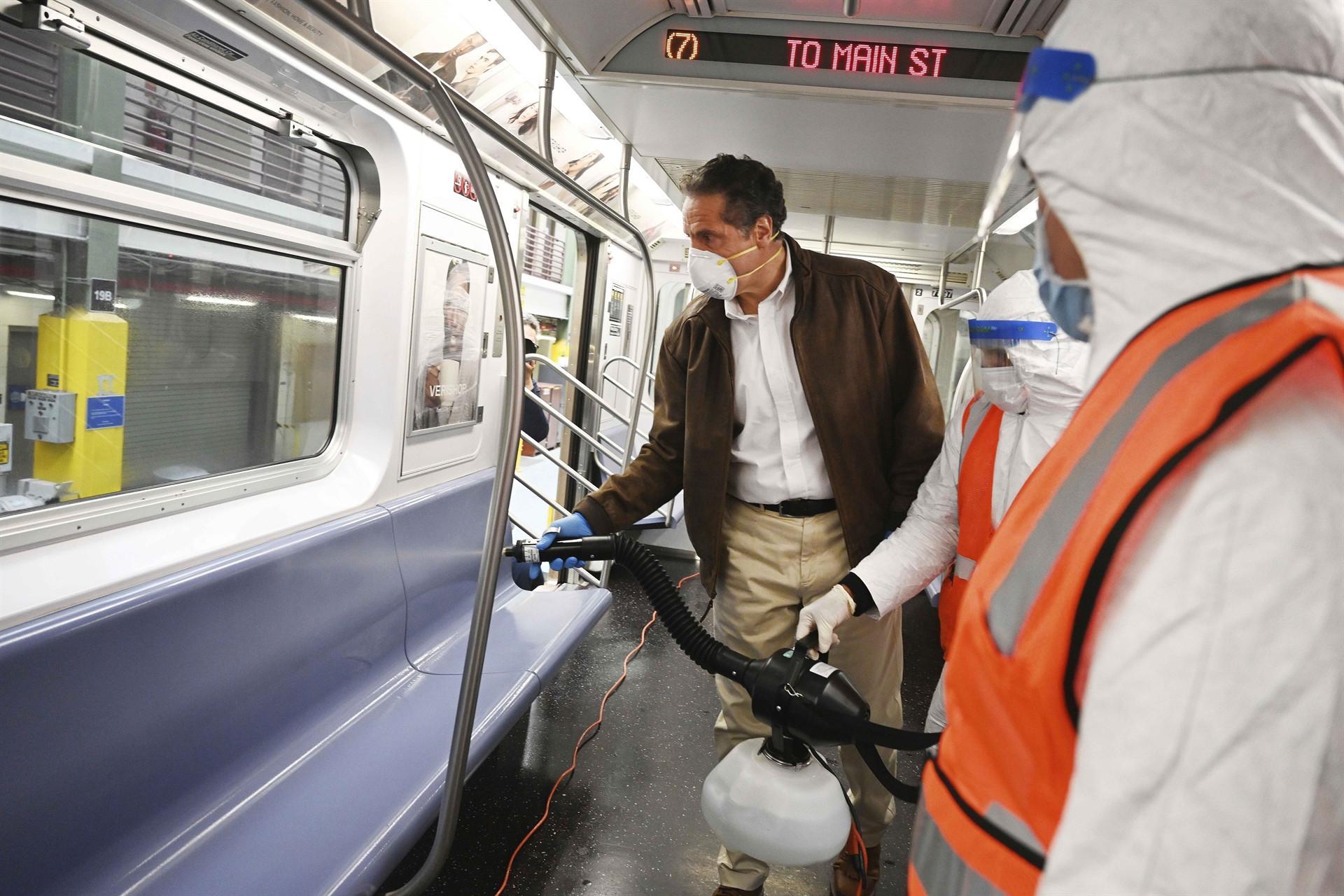
Millions of Europeans emerged from lockdown on May 4, with hardest-hit Italy leading the way out of its two-month coronavirus confinement.
Blue skies greeted Romans as they stepped into a world forever changed by the pandemic that has now infected 3.5 million people.
The milestone came as U.S. Secretary of State Mike Pompeo said "enormous evidence" showed the disease came from a Chinese laboratory, fuelling tensions with Beijing and sending jitters through stock markets.
Around 248,000 people have died since the coronavirus emerged in China late last year and swept across the globe, given wings by the vast network of air routes that in normal times keep the modern world ticking.
Lockdowns imposed on half of the planet in a bid to stem the spread have derailed economies and left tens of millions of people out of work.
Politicians are now grappling with how to get the wheels turning again without sparking a second wave of infections.
Italy -- second only to the United States in its COVID-19 death toll -- was gingerly emerging into the spring sunshine on May 4, with construction sites and factories getting back to work.
Restaurants will reopen for takeaway service, but bars and ice cream parlours will remain shut. The use of public transport will be discouraged and everyone will have to wear masks in indoor public spaces.
"We are feeling a mix of joy and fear," 40-year-old Stefano Milano said in Rome.
"There will be great happiness in being able to go running again carefree, in my son being allowed to have his little cousin over to blow out his birthday candles, to see our parents," the father-of-three said.
Italy's economy -- the eurozone's third-largest -- is expected to shrink more than in any year since the global depression of the 1930s.
In the United States, the previously booming economy was supposed to be the centrepiece of Donald Trump's November re-election bid.
But weeks of lockdown have left 30 million Americans out of work -- and the president's poll numbers sagging.
Trump has increasingly taken to blaming China for the outbreak, and claims to have proof it started in a Chinese laboratory.
China denies the claims, and the U.S. Director of National Intelligence has said analysts are still examining the exact origin.
Most scientists say the disease arose naturally in the animal kingdom.
But Trump's chief diplomat on May 3 ran with his boss's position, citing "enormous" evidence that the virus originated in a Wuhan lab. He did not present any of that evidence.
"I think the whole world can see now, remember, China has a history of infecting the world and running substandard laboratories," he said.
The renewed anti-Chinese rumblings from Washington set financial markets on edge on Monday, as traders fretted about tensions between the world's two largest economies.
Major market Hong Kong shed three percent by lunchtime, while other Asian bourses lost two percent.
The United States has the most coronavirus deaths in the world at more 67,600, a number that rose 1,450 over the 24 hours to May 3 evening.
Trump, speaking at a live TV event, promised an early coronavirus vaccine and an "incredible" future for the nation.
"We can't stay closed as a country, we're not going to have a country left," he said.
Some Republican-leaning states have seen demonstrations -- sometimes armed -- against movement restrictions, with participants decrying government overreach.
Anti-lockdown frustrations have also fuelled the populist president of Brazil, Jair Bolsonaro, who has repeatedly played down the severity of the disease.
"The destruction of jobs by some governors is irresponsible and unacceptable," he told a rally in Brasilia, as supporters in the crowd called on the military to intervene.
"The people are with us and the army is on the side of the law, order, freedom and democracy," Bolsonaro told them.
The rally came as the number of confirmed COVID-19 infections in Brazil passed 100,000, including 7,000 deaths.
Experts believe the overall number of cases could be 12 to 15 times higher, with little testing among the country's 210 million population.
Many parts of Asia have begun to inch back towards normal life, with schools in the Vietnamese capital Hanoi reopening on May 4 after two weeks without new infections anywhere in the country.
But regional heavyweight Japan was set to extend its state of emergency to the end of the month.
Japan has reported a comparatively small-scale outbreak, with 15,000 infections and 510 deaths so far, but there have been persistent fears about a spike in cases.
Russia is rapidly becoming Europe's blackspot, with officials in Moscow urging residents to stay home in an effort to tamp down the daily tally of new cases.
"The threat is apparently on the rise," Moscow mayor Sergei Sobyanin told citizens.
In parts of the continent further along the infection curve, governments were starting to get to grips with the new normal.
Most are advocating continued social distancing and masks in public, as well as more testing to try to track infections.
Face masks will be mandatory on public transport starting on May 4 in Spain, where people were allowed to go outdoors to exercise and walk freely on May 3 after a 48-day lockdown.
Germany will continue its easing on May 4, while Slovenia, Poland and Hungary will allow public spaces and businesses to partially reopen.
In another sign of life returning to normal, Germany's minister for the interior and sport said on May 3 he supports a resumption of the country's football season this month -- as long as teams respect hygiene conditions.